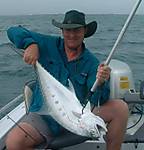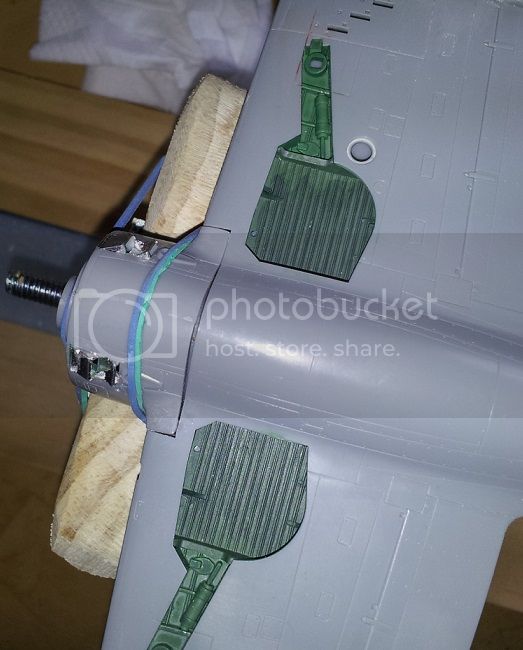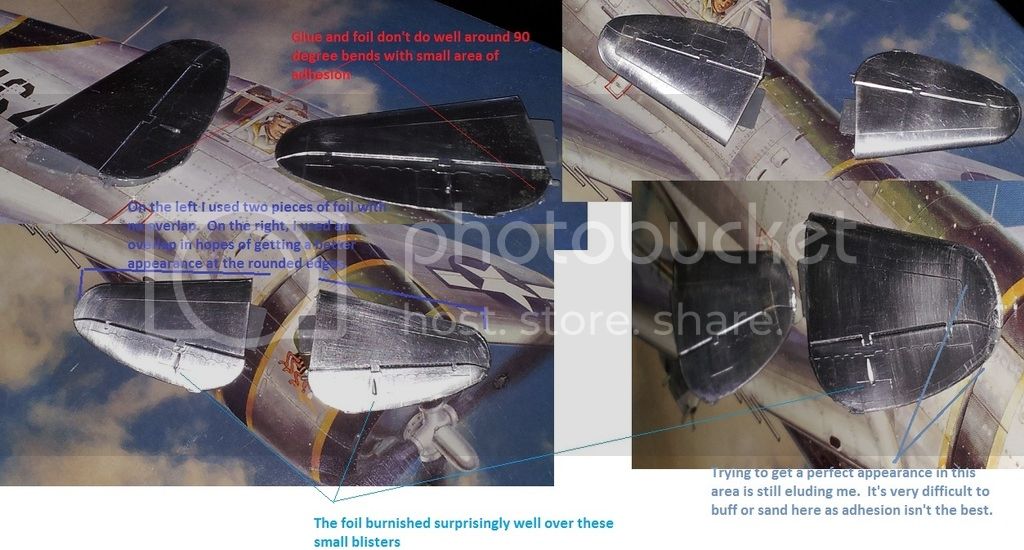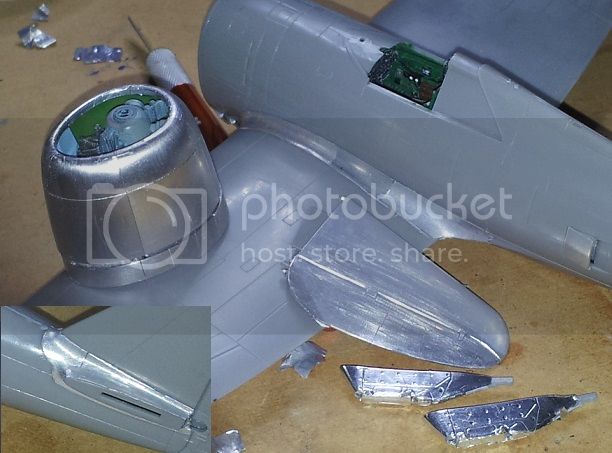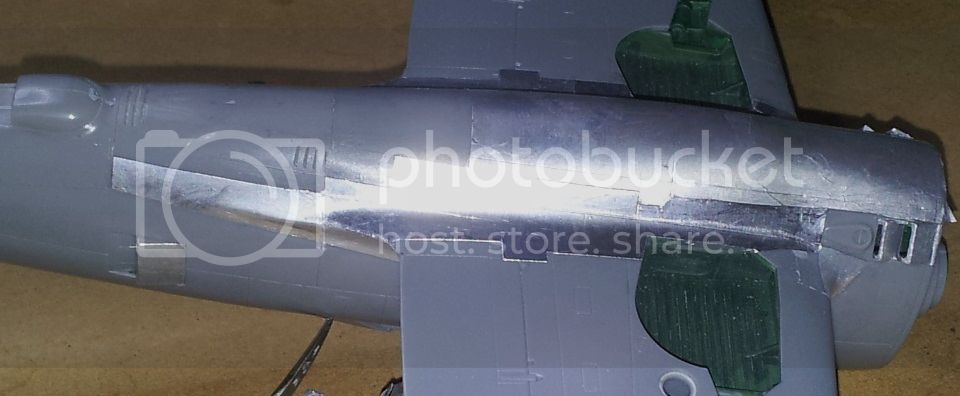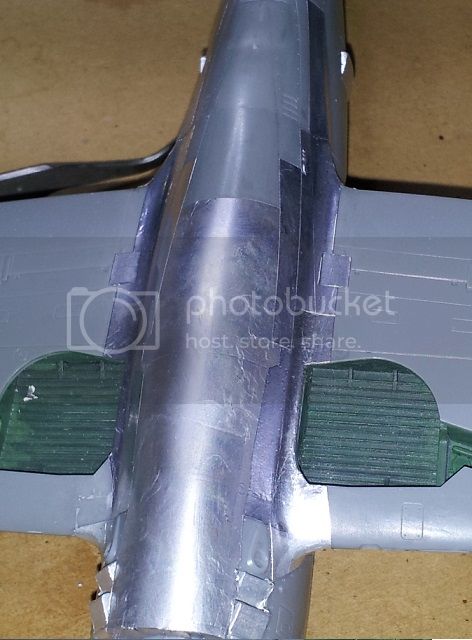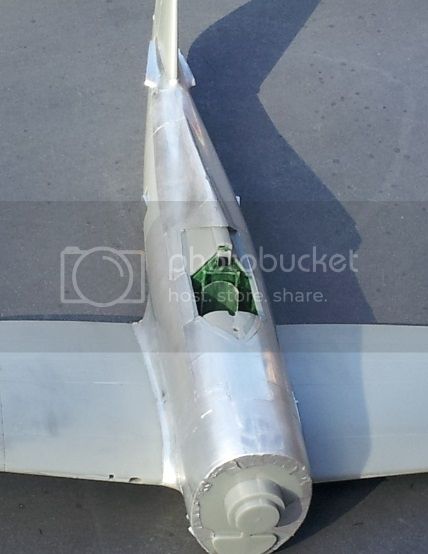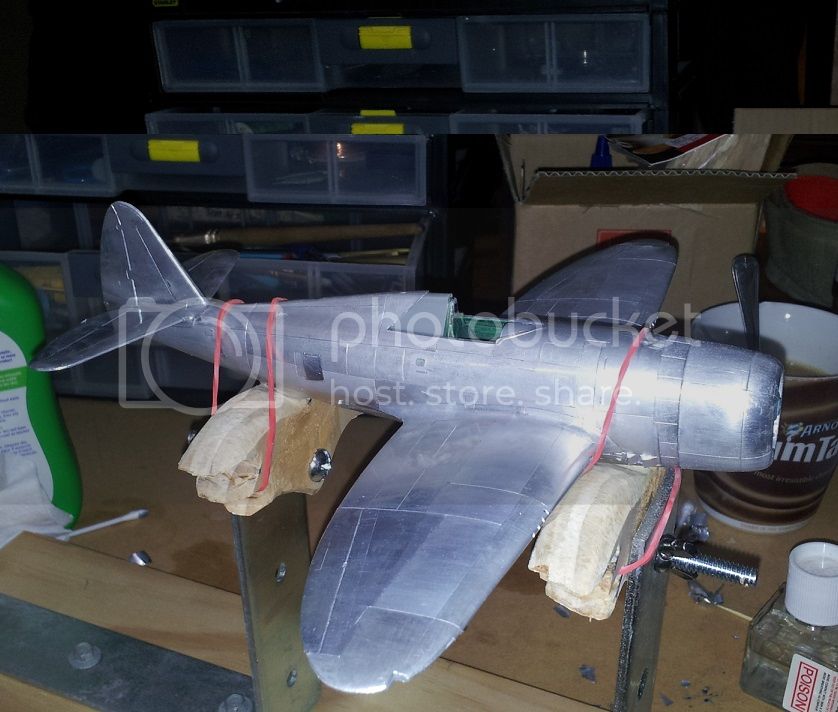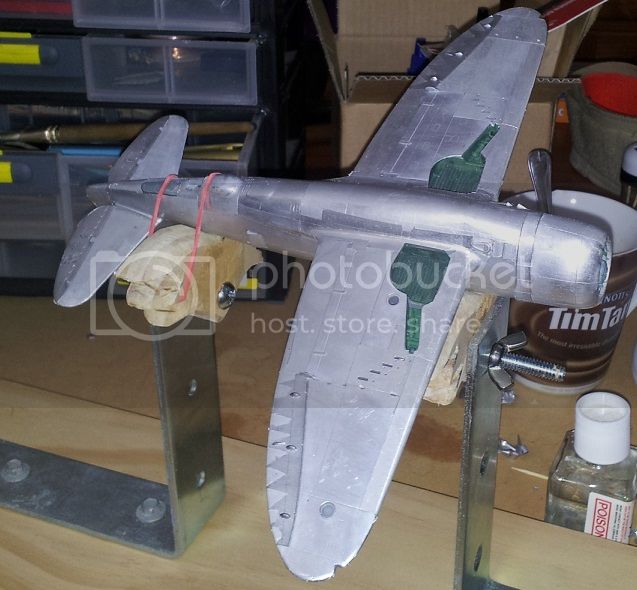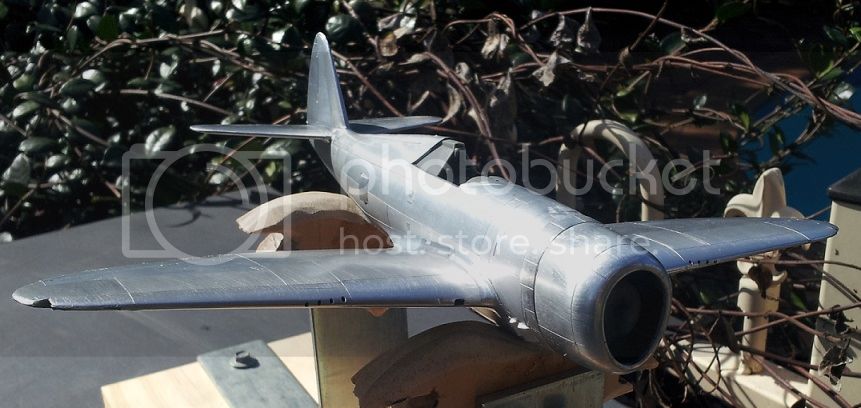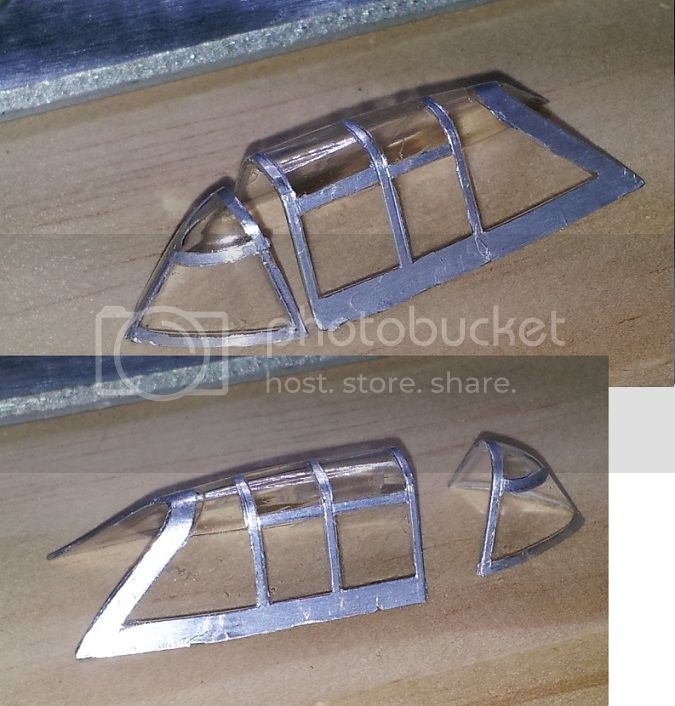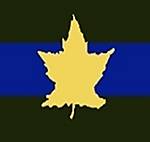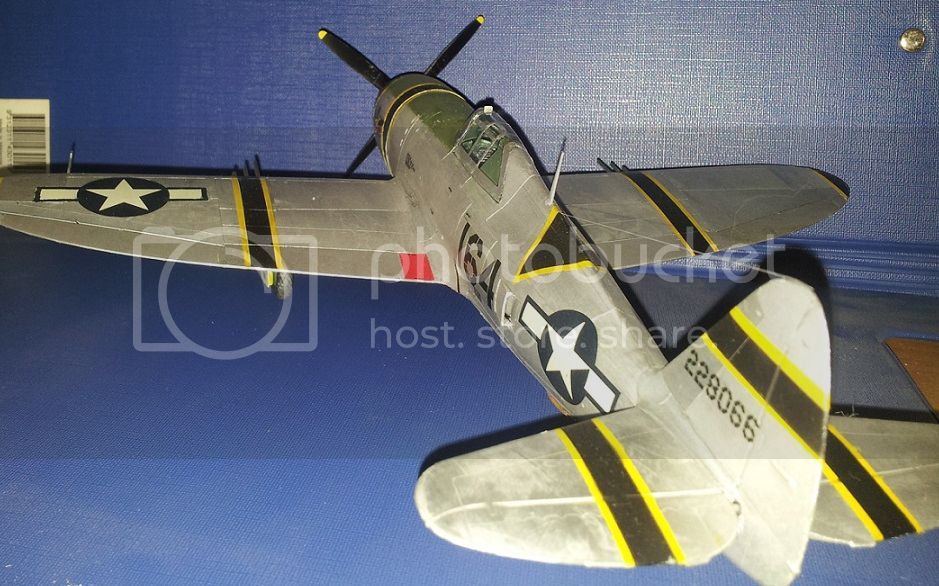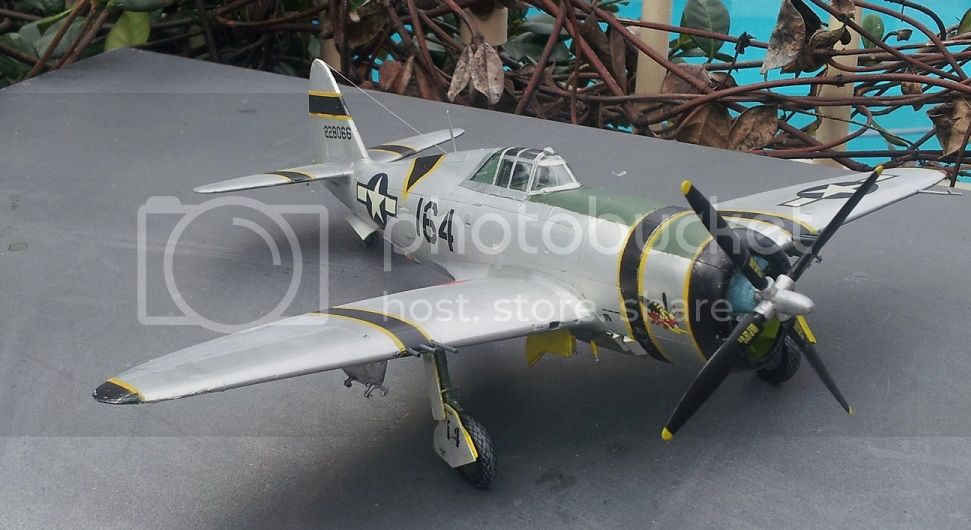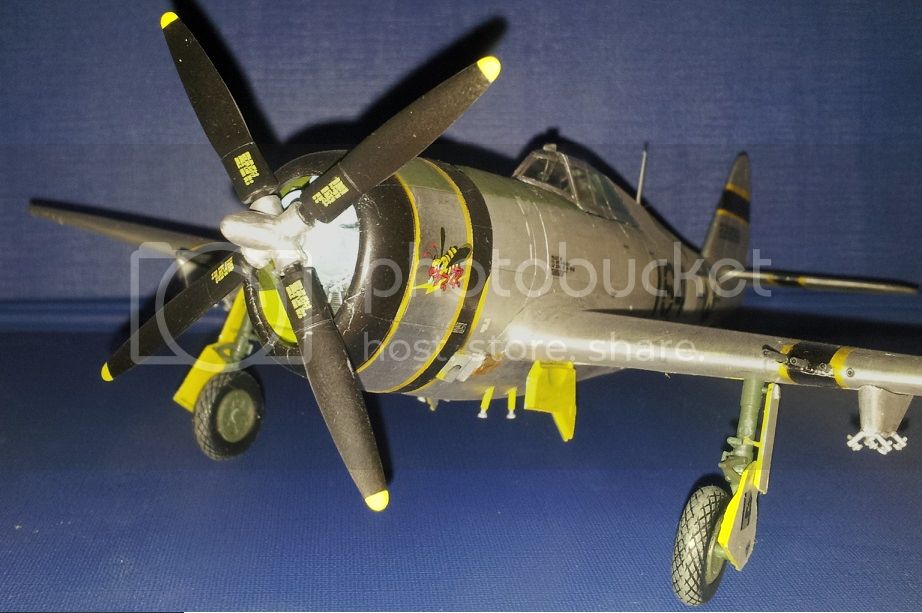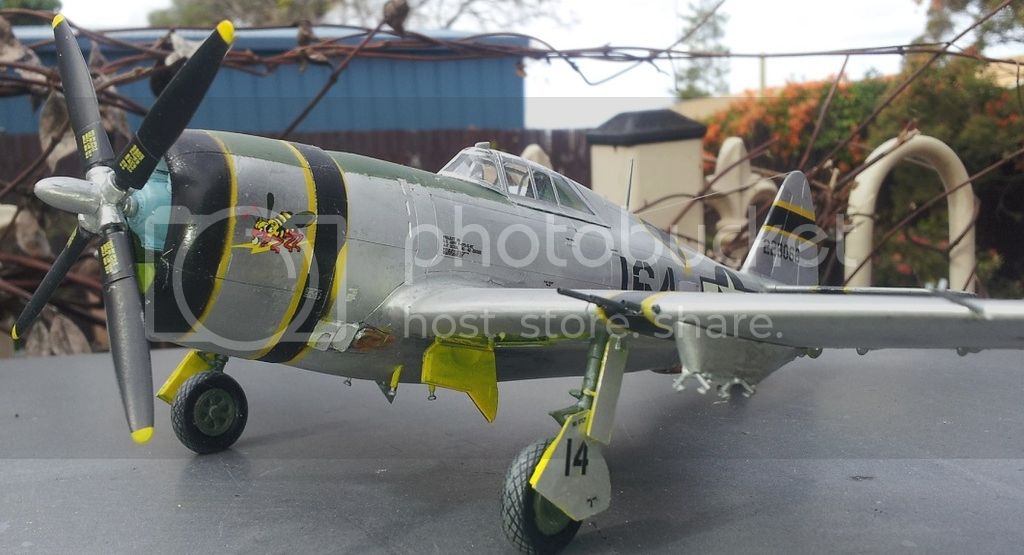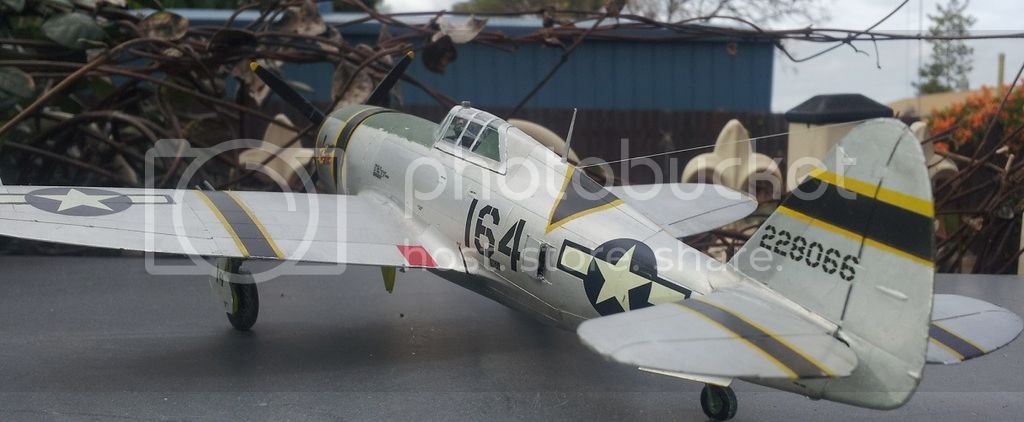I've been waiting on parts to arrive from New Zealand for another build, and have started to tackle my next learning experience.
I put some small effort into the cockpit and engine, but not that much. I'm hoping to stumble upon a pilot figure before I get into seat belts.
Despite the clean shape of the P-47, it really has a lot of shapes to learn the best way to cover. Exhausts, louvres, blisters, and curves all demanding much from my fumble fingers. Our covering is aluminium foil.
The cowling took all morning. And I'm still not happy with it. Digital photos show me things me things my eyes had missed. I started with the engine louvres and the single piece engine cowling. There are seven different pieces of foil on the cooling flaps, and ten on the cowl.
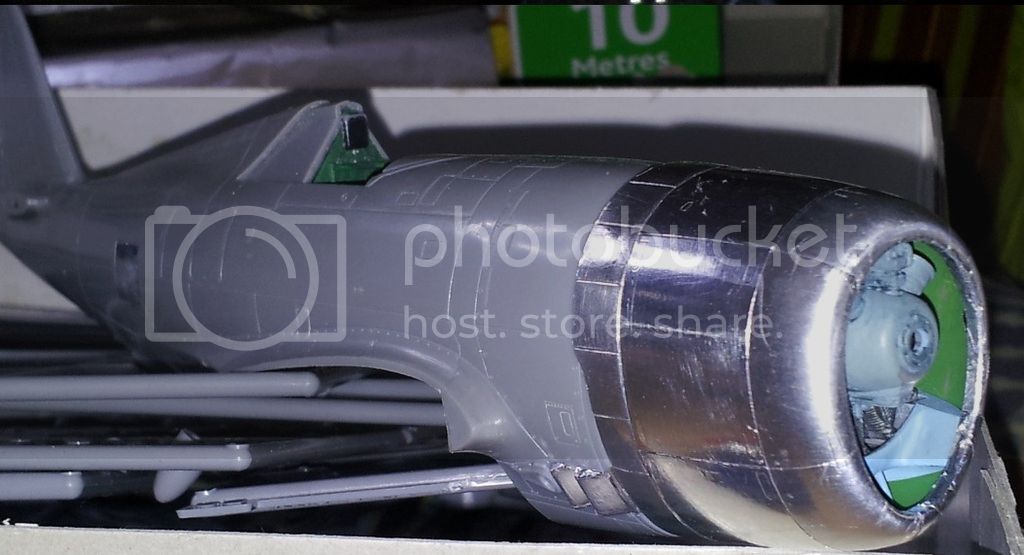
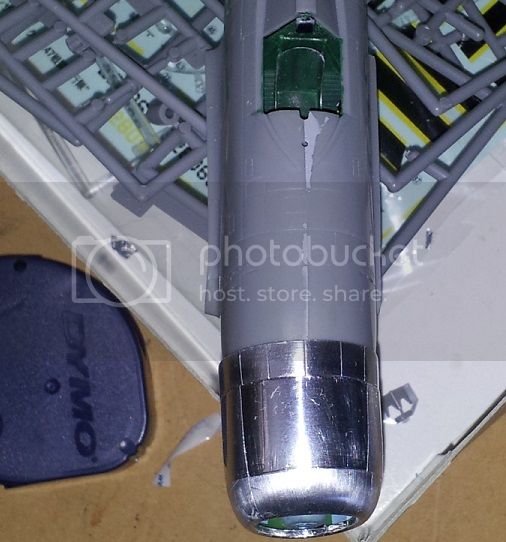

The pimply look on the port side is caused by glue being too thick. I'll have to pull that piece, wash it off with turpentine, and do it again... That's what happens when you take your glasses off!

The glue for the aluminium foil costs the same as a bottle of Alclad. I can't help but be happy with the way the metal actually looks like metal. If I can do this Jug right, I've a Ki-61 Tony and a Ki-44 Tojo I want to subject to the same treatment.
As always, advice and opinions appreciated.
Thanks for looking!
Gary








